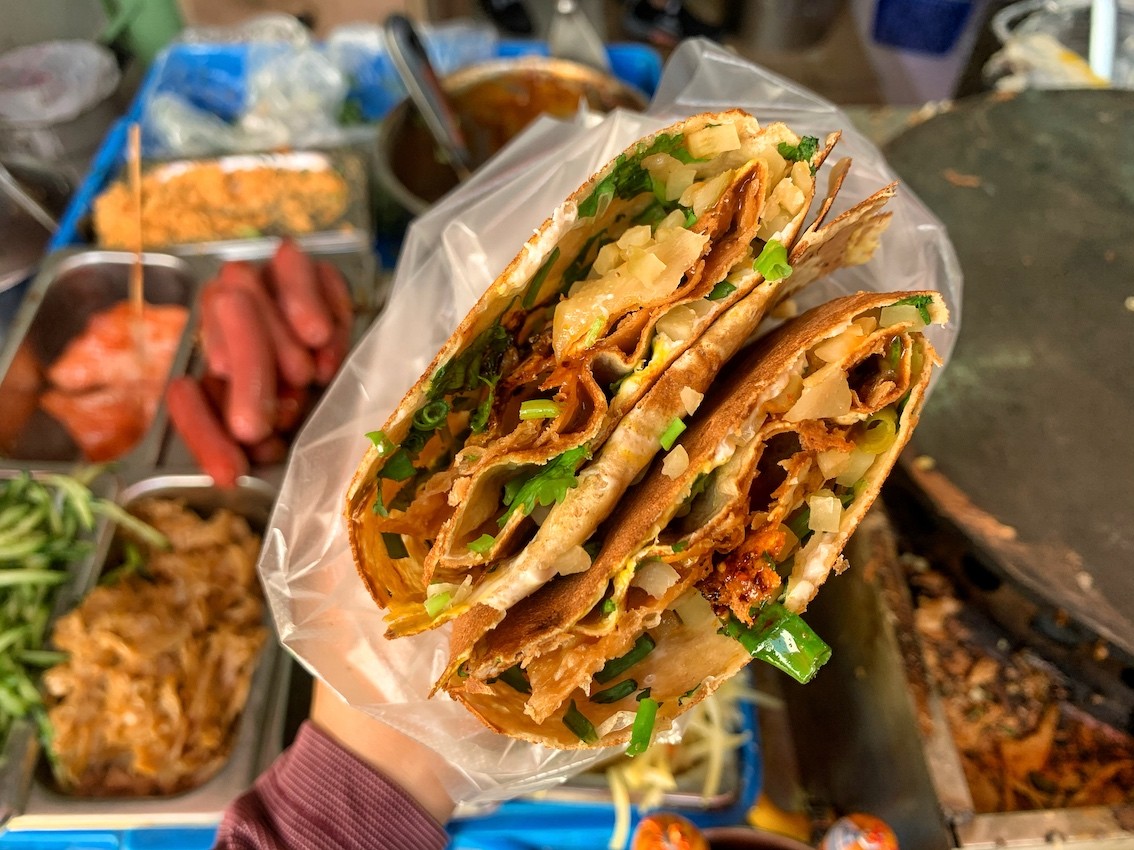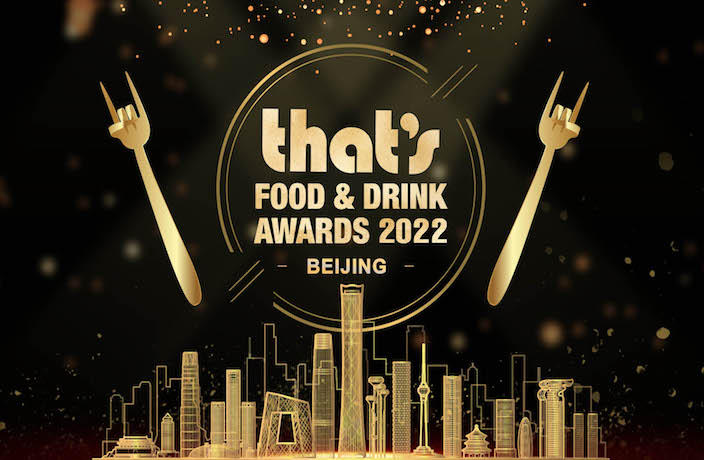As a matter of grammatical pride, I’ve always said that one ‘orders from Sherpas.’ One does not ‘order Sherpas.’ Straight-up ‘ordering Sherpas’ would imply either (a), that Sherpas the delivery service has its own restaurant in which it makes its own food, or (b), that you have gone on Taobao and selected a hardy Nepali man to be packaged up and delivered straight to your door. Both of these options are impossible.
Well, Beijingers, I stand corrected. You can totally order Sherpas. More specifically, you can order the traditional Uzbek dish shurpas at Beijing restaurant Shash. And that’s what I’m doing, now, at 2pm on a Thursday in an empty dining room.
Well, that’s part of what I’m doing, anyway. In an attempt to better understand the cultures along the New Silk Road, That’s Beijing photographer Holly and I are eating our way through them – and Shash is merely stop number one.
Officially known as the One Belt, One Road initiative, the New Silk Road is Xi Jinping’s plan to create a colossal economic zone stretching from China to Europe – a modern, hugely profitable recreation of what was historically known as the Silk Road.
But history shows that capital isn’t the only thing that travels along trade routes; culinary trends do, too. Sichuan, for example, didn’t even have its quintessential peppercorns until Portuguese traders brought them from South America in the 16th century. So what will the traders of today bring to Beijing? How will a colossal trade project affect our diets?
In short: what the fuck do Uzbeks eat?

Eating in Beijing Uzbek restaurant Shash feels like eating in an abandoned opera house – and the experience is as weird and wonderful as it sounds. See listing for details.
According to our waiter at Shash (and Wikipedia) the answer is: shurpa (RMB45), a lamb and vegetable stew. Uzbeks pride themselves on being settled, as opposed to their traditionally nomadic neighbors, so there’s a great deal of wheat farming that manifests itself in the many noodle and bread dishes of Uzbek cuisine.
Shash, meanwhile, is a castle. Its exterior is tricked out like a medieval fortress, and the interior is even crazier. Walls are covered in playful murals of ornately dressed Uzbeks in green, red and blue. Statues of turbaned men stand at attention. Tablecloths are bright purple. I want to get drunk here. Hell, I already feel drunk here. But this is only stop number one, and with my shurpa bowl empty, I move on to Azerbaijan.
Azerbaijan borders Iran and Russia, but Beijing Azerbaijani restaurant Caspi borders the grounds of the North Korean Embassy. Decorations are sparse, much to our relief after Shash’s sensory overload. Inside, we flip through the menu’s heavy laminated pages and settle on meat and dried fruits atop yellow saffron rice – otherwise known as plov.

Tucked away on a side street of Beijing’s Russian neighborhood, Caspi is the perfect place to try plov, a Central Asian staple. See listing for details.
Any discussion of Central Asian cuisine would be remiss not to mention plov. A simple concept – rice plus meat, lightly flavored – plov is a staple throughout much of the region. It also goes by pilaf, plof, pilov and polo, depending on the country.
‘You say plov, I say polo,’ goes the Central Asian folk song of legend. Kidding, I just made that up to segue into the fact that Iranians say polo. We’re going to an Iranian restaurant next.
Or we are until we find out Rumi is closed. (I know this isn’t the section of the magazine where I dish openings-and-closings news, but FYI – Rumi is closed.) We almost scrap our Iran deal until we remember Persepolis is just next door, serving the ‘Iranian burger sandwich’ (RMB55). While this may not sound like the most quintessential of Persian dishes, it does have the word ‘Iranian’ in the name. We order it.

Sanctions be damned: we had an unlikely combination of Iranian and American cuisines in the form of the Iranian burger sandwich at Persepolis. See listing for details.
After all, I hear great things about Iranian food – dates, pilafs, kebabs, rice stew. The Iranian burger sandwich is OK.
We move on to Turkey, China’s gateway to the West. (China is Turkey’s second biggest source of imports; Turkey exports predominately to Europe.) We’re now four restaurants in, and I feel as if I’ve had enough cumin-seasoned meat to feed a Central Asian family for a month. So at the restaurant Turkish Mum, I’m excited to eat something familiar: manti (RMB65), Turkish dumplings.

Turkish Mum is the place to go for manti, kofte and other foods your Mum would ostensibly serve you if she were Turkish. See listing for details.
Compared to Chinese jiaozi, manti are tiny – about the size of peanut M&M’s, filled with lamb and dressed with tomato and yogurt sauce. Holly says they’re not as good as Chinese dumplings. They’re certainly less meaty. Perhaps I’m biased – I did have the best time of my life at a PSY concert in Istanbul one time – but I love them.
Had we more time, we could have lingered over meze – a traditional Turkish spread of tiny plates (think tapas) that might include eggplant salad, salted yogurt, calamari and cheese. Turkish food has distinct Mediterranean influences.
But instead we go to Georgia, a tiny country on the Caspian Sea, and order a khachapuri at the restaurant Georgia’s Feast. Now what’s a khachapuri? For starters, it’s probably one of the richest things you can eat in Beijing. It’s as if foie gras and deep-fried pork fat had a night of slow-moving, unprotected boning and gave birth to something designed to make mildly lactose intolerant food editors very, very uncomfortable.

Georgia’s Feast serves khachapuri with so much cheese, it’s almost grotesque. Almost. We love it. See listing for details.
It is delicious nonetheless – warm, freshly baked bread filled with layers of gooey cheese and topped with a runny egg. It’s such a staple in Georgia that many Georgian cities use the local price of one to monitor inflation. This is called the “Khachapuri Index.”
My khachapuri gave me no economic information, just an orgasmic sensation on my taste buds followed by a strong desire to go to sleep. But the New Silk Road waits for no woman. “We can totally walk to the Russian place from here,” I say. “I mean, it’ll only take half an hour…”
After a walk that definitely takes longer than half an hour, I order a bowl of borscht.

Few places in Beijing have a vodka menu, but Traktirr Pushkin is one of them. See listing for details.
“Nothing else?” says our waiter. No. Oh my God no. I’ve enjoyed eating all day, but my stomach keeps protesting with audible grumbles.
Traktirr Pushkin is a rustic-style restaurant just behind Dongzhimen Nei Dajie, with a long menu of Russian classics and a large selection of vodka. With our beet-red bowl of borscht and heavy bloating, we have symbolically entered Europe. We have not, however, entered the EU – the Silk Road’s treasured final destination – until we get to Stuff’d.
Most maps of the One Belt, One Road initiative end in The Netherlands, and while Stuff’d is not a Dutch restaurant, it does serve the elegantly named Dutch pork sausage Rookwurst. As a recent China Daily headline proclaims: “China-Netherlands Food Trade High on New Silk Road Agenda.” This is why, after a full day of eating, we order sausage.

We know, we know – Stuff’d isn’t Dutch. But it does serve Rookworst, a classic Dutch sausage. See listing for details.
At this point, our stomachs are ravaged. We take one bite for the sake of our experiment, then call it a day.
This has been a hedonistic marathon of dining, sure, but an educational one too. The next day I read that the first train route to connect China and Iran has just arrived in Tehran from Zhejiang.
The day after that, I read that Russian vodka sales are down. Western sanctions on Russia have taken their toll, says the report, but China is trading with Russia more than ever.
Whether you follow the news or not, all these little geopolitical truths add up. The more China works with other countries, the more exposure those of us living in China have to those countries’ cultures. Lactose intolerance be damned: I can only hope this means more khachapuri.
What I’m trying to say is: Cuisine matters. And cuisine changes. It is changing, constantly. And that’s why the chronicling of culinary trends is just as important as the chronicling of others. It’s history; it’s culture.
It’s also dinner. Or, if you want, seven dinners in one day. (Although I’d recommend doing one at a time.)
See listings for restaurant details






















0 User Comments